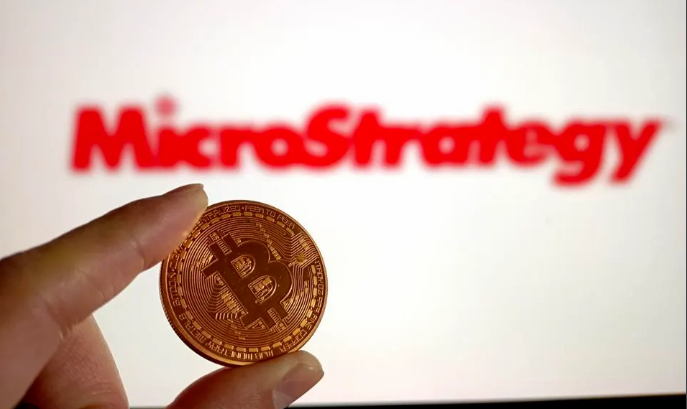Examining the various innovations that led to the Bitcoin white paper shows us that only Bitcoin continues the Cypherpunk ethos.
This is an opinion editorial by Jimmy Song, a Bitcoin developer, educator and entrepreneur and programmer with over 20 years of experience.
It's white paper day and for most people, they think of October 31, 2008 as the beginning of Bitcoin. This is understandable, since the release of the white paper and the subsequent launch of the network are celebratory events. As great as these days are, this is a very limited understanding of what happened.
There was a large amount of innovation that came from a subculture that not enough people are familiar with. And indeed it was within the context of the Cypherpunks that this beautiful monetary system sprung forth. To understand Bitcoin, we need to understand its origins and all that came before.
In this article, I give a brief overview of the many different experiments, most of which failed, that helped lead to Bitcoin. As you will see, the culture that Bitcoin was born from is very much alive in Bitcoin, but not in altcoins or in fiat money. Bitcoin Maximalism, in other words, is the heir to the cypherpunk spirit.
Origins
There were many innovations that were necessary for Bitcoin to work and the very first one was public-key cryptography. Public-key cryptography was invented by a couple of academics: Whitfield Diffie and Martin Hellmann. Indeed, the protocol for exchanging keys bears their names, ECDH stands for Elliptic Curve Diffie-Hellman. They invented public-key cryptography during the dawn of the internet age in 1976, some 33 years before Bitcoin would come along.
The main innovation in public key cryptography was the ability for someone to prove that they know a secret without revealing the secret. If this seems like a magic trick, it does for me, too, and I've been studying this stuff for 20 years. The mathematics are sound but it's not that intuitive that you can prove that you know something without revealing it. Still, this is something that's possible and public-key cryptography is now the basis for the modern internet and the security around a ton of digital properties.
The key aspect of public-key cryptography that's interesting from a Bitcoin perspective is that the system is asymmetric. Before, you needed both parties to know a secret before data could be transferred securely. With public-key cryptography, one party has a secret while the other party has a public identifier/key. The innovation allowed for encryption/decryption without the traditional setup of a shared secret as well as signing/verification which clearly identifies a private key as the originator of a message.
It took a bit of time before the academic breakthrough found its way to commercial products, and indeed, it's that frustration that led to the next step in our journey.
Cypherpunk Mailing List
Academic papers like the one that Diffie and Hellmann wrote are good and all, but the actual engineering didn't really take off until later. The early internet allowed for collaboration between strangers and it's in that early stage that communities started forming. The most significant of these communities was the Cypherpunks Mailing List. This was an email list created in 1992 that had an aim of using the many cryptographic technologies available for the good of the individual, not just militaries.
This list had an impact on the evolution of the internet, to put it mildly. Early Cypherpunks like Marc Andreesen would go on to create the web browser. Others like Julian Assange would expose government malfeasance. Still others like Adam Back and Nick Szabo would have roles in the creation of Bitcoin.
The list was a cultural break from the stodgy, academic approach of the previous generation. The pioneers like Diffie, Hellmann, Ralph Merkle and others were much more interested in writing papers than actually implementing software that would make a difference for the ordinary person. If the older generation were a bunch of scientists, the Cypherpunks were a bunch of engineers.
Some of the phrases from A Cypherpunk Manifesto are legendary. “Cypherpunks write code.” “We must defend our own privacy if we expect to have any.”
The general tone of the manifesto is making tools for the purpose of keeping privacy. This attitude reflects the culture of the Cypherpunks. We need to assert our natural rights through cryptography and not let would-be overlords take them.
The manifesto is prescient in the ways that our digital lives would eventually be centralized. This is all the more remarkable as back then, the internet didn't even have web pages, let alone online shops, social networks or live video servers. The internet back then was email, IRC and Usenet forums. Yet the Cypherpunks foresaw that privacy would be a future attack vector. This is not unlike the Bitcoin Maximalists today who foresee the consequences of a CBDC-based world order.
In particular, the Cypherpunks recognized that money was a big security hole. Knowledge about your purchases makes you significantly vulnerable as that's some of the most private data you have. To quote the manifesto:
“We are defending our privacy with cryptography, with anonymous mail forwarding systems, with digital signatures and with electronic money.”
First Attempts At Money
The first attempts at using cryptography for monetary purposes was with David Chaum's Ecash. A mere six years after Diffie and Hellmann created public-key cryptography, Chaum came up with a way to do anonymous bearer digital cash, as long as you trusted the issuer. His Ecash system was a thing of beauty. You could transfer receipts digitally without revealing who you were through a process called blinding. Ecash could be assigned from one party to another, without any record of where that cash had been. The fact that you could verify that the cash really did come from the issuer without knowing any of the participants that transferred that cash was the innovation.
The early emphasis on privacy was very much a part of the Cypherpunk ethos as they recognized early that digital trails are permanent in ways that physical trails are not.
It took David Chaum another 14 years to bring this idea to market with his company DigiCash, which he thought could be a private internet money. Unfortunately, banks didn't really want to be issuers of Ecash as they wouldn't have that much control over who was using it. Clearly identifiable credit card transactions won instead, with companies like PayPal taking full advantage.
The defeat of DigiCash was disappointing to a lot of Cypherpunks. Instead of a private digital cash as the standard way to do commerce online, the standard was now credit cards, which let third parties know exactly what you're buying. What became clear was that there was a central party in the Ecash scheme, namely the bank that was issuing the cash. Centralization would be the big vulnerability that ruined the privacy, security and self sovereignty of this system. In other words, by linking Ecash to fiat currency, the Ecash system was infected by its rules and regulations.
Liberty Dollars And E-Gold
Additional attempts to create privacy-preserving money were tried, including two that ran for about 10 years: Liberty Dollars and e-gold. Both were meant to be used in a private manner, unlike credit cards.
Unfortunately, both projects suffered from the same critical flaw. They were centralized. In 2008 both were shut down and many people were jailed by the Department of Justice for not following AML/KYC laws.
As an aside, this is roughly how long it takes for government entities to go after some of these centralized schemes. I suspect that prosecuting centralized altcoins will take roughly the same amount of time.
A Decentralized Digital Ledger
In 1998, Wei Dai came up with a distributed common ledger for an internet money system. His b-money paper was a system based on an unspecified computationally difficult problem. Unfortunately, he couldn't figure out how to make the problem objective or prevent the number of units of the currency from going to infinity.
Wei Dai had created what would later be called a blockchain, but b-money was never implemented because of the money issuance problem. If doing X would get you some money on the ledger, and the money was valuable, there would be an infinite amount of money in the system. He couldn't figure out how to make the amount of money in the system scarce.
Proof-Of-Work
So, how to make digital money scarce? The Cypherpunks stumbled onto a solution from an unexpected direction.
The problem that Adam Back was trying to solve wasn't anything related to money. The Cypherpunks were working on a remailer, which would be a way to preserve privacy for emails. The design was distributed, as having a central party control everything would defeat the purpose of preserving privacy. But an essentially anonymous email system meant that these remailers would go down in the event of a denial-of-service attack, which we now call spam.
As there wasn't a central authority to filter these spam emails, he came up with a novel solution. He added computing cost to the emails to make denial of service not impossible, but at least expensive. This was called hashcash and the scheme was proposed as an effective way to filter large volumes of spam.
This innovation in 2002 sparked interest in a different group of Cypherpunks. Among the Cypherpunks was a group that were very interested in digital money. Nick Szabo, Hal Finney and Wei Dai were among them and when they saw hashcash come across the Cypherpunk mailing list, they realized almost right away that there was potential for digital scarcity.
Hashcash had the right properties. It was designed for a decentralized system and solved a real problem of zero marginal cost. Still, they weren't sure how to make all of it work.
Reusable Proofs Of Work
At this point, we had most of the elements that would be needed for private, digital money. Hal Finney recognized that between public-key cryptography, digital ledgers and proof-of-work, there was enough to at least implement a proof-of-concept digital money. This was called Reusable Proofs of Work and it was implemented in 2004.
The basic idea was that anyone could submit a sufficiently difficult proof-of-work for some amount of tokens on a central ledger. That ledger could be updated via transactions making for a monetary system. The ledger wasn't distributed, exactly, as proof that the transaction was valid was based on verifying the computer that the central server ran on. The hardware was known and could be queried by users to see if it ran the ledger without cheating.
This was fairly close to Bitcoin, but still had centralization or single points of failure. First, the computer was manufactured by IBM and the software relied on that hardware being auditable. IBM could manipulate their hardware in the future. Second, users had to trust that the central ledger would stay online. The problem with centralized services is that they can and do go down, which completely stops the system. This is, of course, the major problem with altcoins like Solana.
Once again, centralization was the vulnerability that couldn't be overcome.
Bitcoin
In 2008 Satoshi Nakamoto took all of these ideas and combined them to create Bitcoin as we know it today. In addition, he came up with a particularly clever innovation of the halving schedule, the difficulty adjustment and putting the proof-of-work into the ledger.
The combination of all three created real scarcity and removed the need for a central party. Instead of some arbitrary amount of money being given out to anyone with proof-of-work, there was a contest to find a given proof-of-work in a global search. The halving and supply schedule guaranteed an upper limit. For the first time, we had true digital scarcity.
The years of searching for a solution was a slow and steady one. First Ecash was an adjunct to the dollar. Then, b-money added using a ledger to keep track of a purely digital asset. Then proof-of-work added unforgeable costliness. And finally the halving schedule and difficulty adjustment on the proof-of-work required to issue new tokens strictly limited the amount issued.
A Culture Of Self Sovereignty
It's in this context that we can finally analyze the current Bitcoin culture. The Cypherpunks started and continued on an ethos of not just building, but in removing security threats. The lessons learned over 15 years of failed digital money was that centralization was the big security threat. Centralization is what sank Chaum's Ecash. Centralization is what prevented b-money and RPOW from working. Centralization is what makes fiat money such a perilous asset to be holding. Bitcoin was born of necessity, because these other systems didn't work.
Stablecoins are really attempts at Ecash, except worse due to their limited privacy capabilities. Altcoins are centralized promises, the kind which Cypherpunks detested as theoretical. Bitcoin is the only coin that continues this ethos of self-sovereignty. Indeed, altcoins hold onto their centralization and will never give them up because that's what gives their controllers money and power.
Altcoins reflect the values of their founder. Professor coins are theoretic and don't work in practice. VC/Business types create coins that increase their own wallets, but do little to provide self-sovereignty or even value to their users. Technologists mostly just mess around and make things without much regard to what gives self-sovereignty. Only a Cypherpunk could have created Bitcoin.
That self-sovereignty, that reduction of the attack surface, that focus on security and privacy is at the heart of the Cypherpunk ethic. Instead of focusing on getting rich, or famous, or disrupting some industry, Bitcoin came out of a much humbler origin — of wanting to keep the value we've already created without the potential of it being taken away.
Bitcoin Maximalism is the descriptive idea that money has a network effect and that Bitcoin will win due to its decentralization and value-saving without some entity which can tax/steal it away. Maximalism is an extension of the self-sovereign ethic of the Cypherpunks.
Carrying On The Legacy
Carrying on the legacy of Cypherpunks is not a small responsibility. They were on the frontlines against the tyranny of government in the digital realm. They were at the forefront of the Encryption Wars against the government. It's not a coincidence that Assange was a Cypherpunk. Bitcoiners are now on the front lines of this battle that is quickly expanding to battles around CBDCs, financial surveillance and worse.
In that sense, altcoiners are incredibly cringe. They are willing to sell their souls, comply with whatever governments want and bend the knee to keep their rent-seeking positions. They are corporate copies of Bitcoin without the Cypherpunk spirit. They are cheap imitations — not just in code, but in culture.
As Bitcoiners, we continue the Cypherpunk tradition. That means writing code, so to speak. You don't rest on your laurels and practice mental masturbation about what might be.
Altcoiners talk. Bitcoiners do.
This is a guest post by Jimmy Song. Opinions expressed are entirely their own and do not necessarily reflect those of BTC Inc or Bitcoin Magazine.

You can get bonuses upto $100 FREE BONUS when you:
💰 Install these recommended apps:
💲 SocialGood - 100% Crypto Back on Everyday Shopping
💲 xPortal - The DeFi For The Next Billion
💲 CryptoTab Browser - Lightweight, fast, and ready to mine!
💰 Register on these recommended exchanges:
🟡 Binance🟡 Bitfinex🟡 Bitmart🟡 Bittrex🟡 Bitget
🟡 CoinEx🟡 Crypto.com🟡 Gate.io🟡 Huobi🟡 Kucoin.













Comments